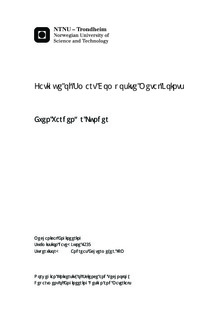Fatigue of Smart Composite Metal Joints
Master thesis
Permanent lenke
http://hdl.handle.net/11250/241827Utgivelsesdato
2013Metadata
Vis full innførselSamlinger
Sammendrag
Adhesive joints are ideal for connecting dissimilar materials in optimized structures.Low weight and potential savings in manufacturing costs are major advantages relatedto such joints, but their use is currently limited by uncertainties about the long-termperformance of the joints. A smart material with the ability to monitor its state ofhealth would be ideal for monitoring of the long-term performance and also for makingimprovements to the joints. This thesis has explored the fatigue behavior of compositemetal joints and how optical fibers can be included in the joints as a method of integratedhealth monitoring.Cracked IPE100 steel beams were repaired with composite patches. The fatigue lifeof the patch repaired beams was tested in a four point bend test. Optical fibers wereembedded in the adhesive layer of the composite patch and on top of the patch. Anoptical backscatter reflectometer was used to measure the strains in the composite metaljoint during testing. These measurements were compared against finite element analysisand strain gauges. The results were found to coincide well with the finite element analysisand the strain gauges. The optical fibers were proven to detect damage propagation andgrowth versus number of cycles. It was observed that different failure modes propagatingin the composite metal joint could be detected and distinguished by the optical fibers.
